Should You Update Your Market Segmentation Now or Later?
October 26th, 2020

Recently, I was talking to a colleague about some upcoming segmentation research. “The slide” that we’ve all seen a million times in segmentation presentations came up:
“To be effective, a segmentation solution must deliver segments that are
Measurable, Substantial, Accessible, Differentiable, and Actionable.”
Stability of the Segmentation Solution
Underlying all of these requirements was the idea of stability over time. Sometimes stability was added explicitly as an additional requirement. As researchers we know that segmentation is a major foundational effort that drives long term strategic planning. For decades, a segmentation was expected to last 3 to 5 years barring any major category disruptions.
Well, 2020 brought disruptions the likes of which we’ve never seen before. And 2021 started with a bang. We are now in month 11 with the pandemic numbers worse than ever. It has impacted how we work, educate our children, shop, and socialize. From important financial and medical decisions all the way down to what’s for dinner, every single decision we make about our lives has been impacted.
Uncertainty Is the ‘New Normal’
We all recognize that there is no going back to “normal” after this long. With the pandemic’s end not yet in sight, we are also a long way from the “new normal” that will eventually come. Vaccines are coming but so is an even more contagious variant. On top of that, we add the political uncertainty we are dealing with in January. The only thing that we can be certain of is that this feeling of uncertainty will continue. There is no question that these disruptions have already, and will continue to, shift consumer behavior in meaningful ways. The big unknown is which shifts are just to get through and which ones will have long-term impact after it finally ends.
I, for one, will most likely never have a huge, stock-up grocery shopping trip again. It is much more convenient to order online a few times a week. OK, I admit it… letting someone else schlep those bags from the store to the car and up the front stairs has spoiled me and I don’t want to go back.
Strategy Must Evolve along with Consumer Behavior
It is clear that after 11 months, “wait until it is over” is no longer an option. When consumers are uncertain, they spend less. And when consumers spend less, a slip in your market share has serious financial impact. Internalizing and addressing marketplace changes will protect your share, especially from those taking an early lead in understanding category shifts. As usual, you can also win share from those who don’t focus their efforts where they can have the most impact.
How to Adapt Segmentation Research for the ‘New Normal’
As the planning horizon has changed from a few years to a few quarters, so must the expectation for segmentation research. In the past, I recommended a several-step process:
- stakeholder work sessions to generate hypotheses and ensure engagement
- qualitative upfront to frame issues and language for the quantitative survey
- work sessions with the viable solutions to choose the one that best fits the business
- qualitative on the back end to develop personas, and materials/road shows to socialize the solution.
Those steps are all critical to a long-term segmentation solution in a more stable marketplace. The smarter play now is faster and leaner.
- Go straight to quantitative with questions you know you can take immediate action on.
- Build in the expectation of updating the analysis as events continue to unfold. Then, go directly into short-term planning.
Segmentation Research Still Drives Strategy, but at a Faster Pace
Even with a simpler, faster approach, the most critical element of segmentation research still holds. It creates the foundation for building a sound marketing strategy of who to target and how to influence them. When you have to navigate significant shifts like we see now, you need this information most to realign resources most efficiently.
Imagine what you might have done differently the last few months if you had current information on how to best influence the segments most likely to buy your brand at your fingertips. Do you know where your current buyers and best prospects are looking for your brand/category now? What else are they finding that might take their attention? What most influences their decision?
So, if you ask my opinion on whether to update your market segmentation and target profiles now or later, my answer is both!




